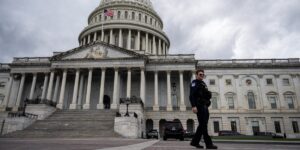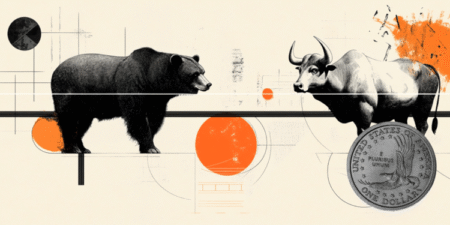- The USD/JPY attracts buyers on Thursday, although it remains confined in a multi-week-old range.
- The divergent BoJ-Fed policy expectations could cap any further move higher for spot prices.
- Traders now look to flash global PMIs for some impetus ahead of Fed Chair Powell on Friday.
The USD/JPY pair is building on the overnight modest rebound from the 146.85 region, or the weekly trough, and gaining some positive traction during the Asian session on Thursday. Spot prices, however, remain confined in a three-week-old range and currently trade around mid-147.00s, awaiting a fresh catalyst before the next leg of a directional move.
In the meantime, the uncertainty over the likely timing of the next interest rate hike by the Bank of Japan (BoJ) continues to act as a headwind for the Japanese Yen (JPY). Apart from this, the recent rise in the US Dollar (USD), bolstered by reduced bets for a more aggressive policy easing by the Federal Reserve (Fed) in September, offers some support to the USD/JPY pair.
The upside, however, remains capped amid the divergent BoJ-Fed policy expectations. In fact, the BoJ is still anticipated to stick to its policy normalization path, while the Fed is expected to resume its rate-cutting cycle in September. This, in turn, holds back traders from placing aggressive directional bets around the USD/JPY pair and leads to the range-bound price action.
Meanwhile, the S&P Global flash Japan Manufacturing PMI improved to 49.9 in August from the previous month’s final reading of 48.9, though it remained in contraction territory for the second straight month. This, however, fails to provide any meaningful impetus to the USD/JPY pair, which also reacted little to the Minutes from the July FOMC meeting released on Wednesday.
The Minutes revealed that most participants viewed it as appropriate to leave interest rates unchanged, and noted that it would take time to have more clarity on the magnitude and persistence of higher tariffs’ effects on inflation. Moreover, policymakers assessed that the impact of tariffs had become more apparent, but the overall effects on the economy, inflation remained to be seen.
Nevertheless, the aforementioned fundamental backdrop makes it prudent to wait for strong follow-through buying before positioning for any further near-term appreciating move. Traders now look forward to the release of the flash global PMIs for short-term opportunities on Thursday, though the focus remains on Fed Chair Jerome Powell’s speech at the Jackson Hole Symposium.
Bank of Japan FAQs
The Bank of Japan (BoJ) is the Japanese central bank, which sets monetary policy in the country. Its mandate is to issue banknotes and carry out currency and monetary control to ensure price stability, which means an inflation target of around 2%.
The Bank of Japan embarked in an ultra-loose monetary policy in 2013 in order to stimulate the economy and fuel inflation amid a low-inflationary environment. The bank’s policy is based on Quantitative and Qualitative Easing (QQE), or printing notes to buy assets such as government or corporate bonds to provide liquidity. In 2016, the bank doubled down on its strategy and further loosened policy by first introducing negative interest rates and then directly controlling the yield of its 10-year government bonds. In March 2024, the BoJ lifted interest rates, effectively retreating from the ultra-loose monetary policy stance.
The Bank’s massive stimulus caused the Yen to depreciate against its main currency peers. This process exacerbated in 2022 and 2023 due to an increasing policy divergence between the Bank of Japan and other main central banks, which opted to increase interest rates sharply to fight decades-high levels of inflation. The BoJ’s policy led to a widening differential with other currencies, dragging down the value of the Yen. This trend partly reversed in 2024, when the BoJ decided to abandon its ultra-loose policy stance.
A weaker Yen and the spike in global energy prices led to an increase in Japanese inflation, which exceeded the BoJ’s 2% target. The prospect of rising salaries in the country – a key element fuelling inflation – also contributed to the move.
Read the full article here















